Vera Barclay
Vera Barclay was a pioneer of women in Scouts.
Vera Barclay was one of the first women in Scouts and also the first woman to hold a post in the early Scout Headquarters. Using her own practical experience, she developed a varied programme for the Wolf Cubs and encouraged other women to become involved.
Early Life
Born in 1893, Vera grew up in a large family. Her father was a Vicar based in Hertford Heath, just north of London. In 1912, aged 19, she joined a small, but growing, number of women in Scouts by working with the Scout Troop in her village.
Over the next eight years, Scouts would come to dominate her life. It would provide her with unprecedented opportunities to influence the development of the Movement.
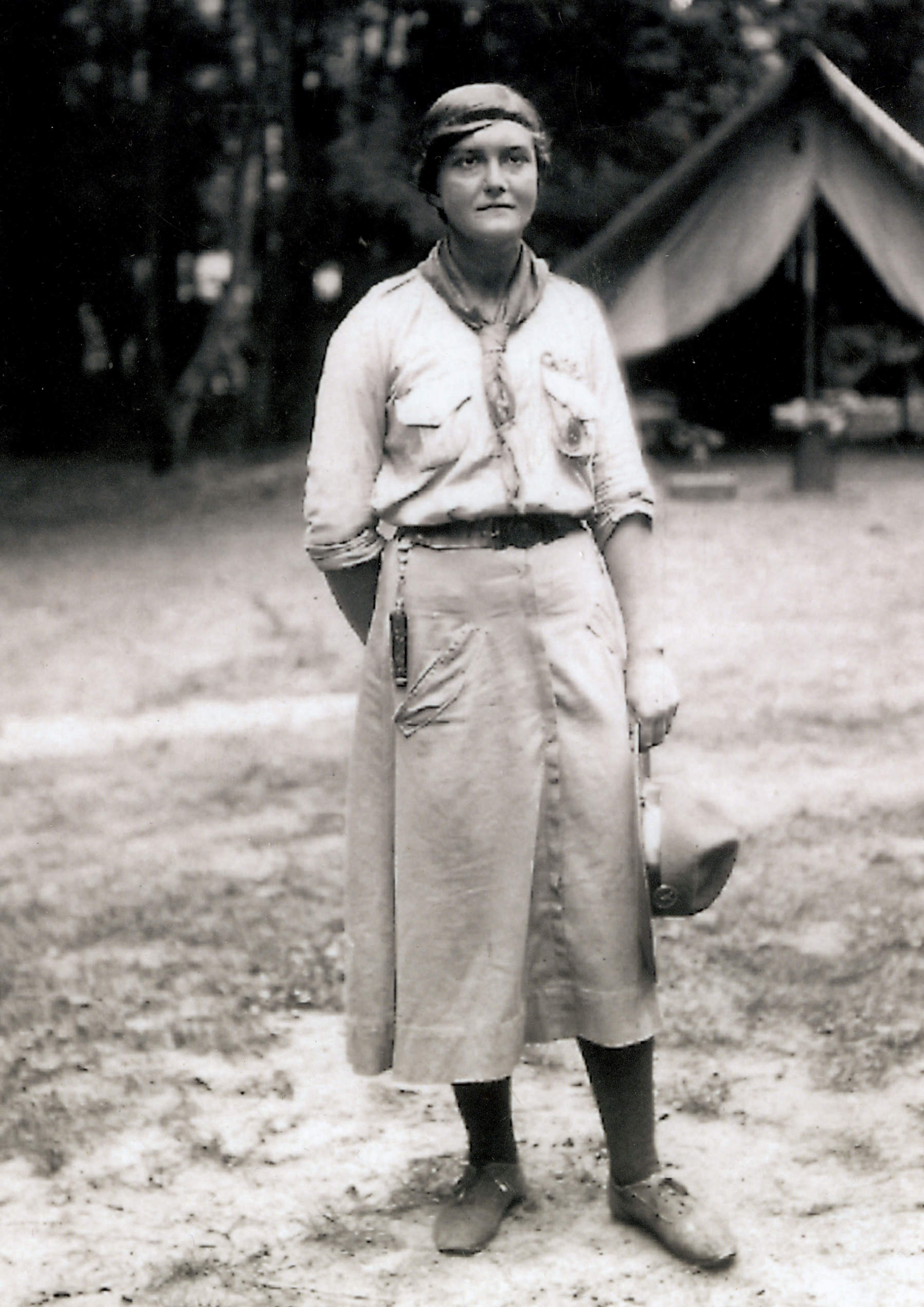
Wolf Cubs or Junior Scouts
Almost as soon as Scouting began there was a clamouring of younger voices wanting to join the Movement. As a Lady Scoutmaster Vera witnessed the demand for this kind of offer and describes trying to let the boys down gently. She said: 'Often as I walked through the village, one or another of these keen-eyed, neglected youngsters would run after me, calling “Miss, miss! If yer wants anuver Scout, I’m ready!” “Right” I would answer, “I’ll certainly remember you,” and I would officially take his name and send him along with rekindled hope. But two years is terribly long when you are nine years old.'
In January 1914 Headquarters Gazette published an article called ‘Wolf Cubs or Young Scouts – How to train them’ summarising the new section and its rules. The programme was a reduced version of the Scout’s with no specific activities for the younger boys.
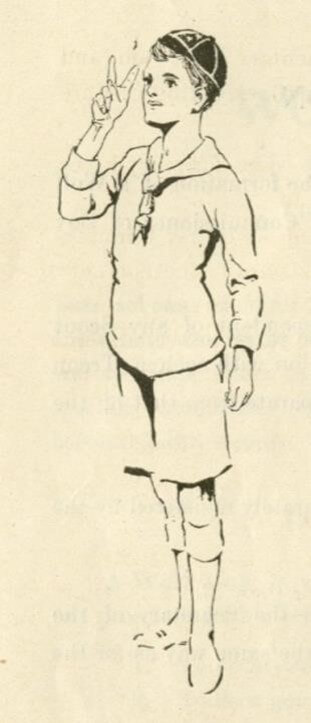
Vera was finally able to keep her promise to the boys who had been so desperate to join her Scout Troop by starting the 1st Hertford Heath Wolf Cub Pack. She recruited her sister Angela to become Cubmaster. They ran a programme packed with imaginative games designed to appeal to the younger boy. This closely echoed Robert Baden-Powell’s evolving ideas for Wolf Cubs although it seems unlikely that they had yet to meet in person there was clearly a meeting of minds.
Women in Scouting
Vera was a strong and early advocate for the involvement of women in Scouting. When discussing how a Pack should be run she stated: 'There should be a separate Cubmaster …. Boys under the age of eleven will get on quite as well (perhaps better) in charge of a woman Cubmaster – provided she is the right sort …. … If every Scoutmaster could persuade a woman of his acquaintance to run a Pack in connection with his Troop, he would find Scouting in the future vastly simplified.'
Vera and Angela Barclay were amongst the first Cubmasters to receive their warrants and their names appear in the first list of Cubmasters to appear in the December 1914 Headquarters Gazette.
Vera started to contribute to the Headquarters' Gazette and in January 1915 published an article entitled “How a Lady can Train the Cubs” and June 1916 she attended the first ever Cubmaster’s Conference. The conference discussed many aspects of Cub work and was a sign that the pilot phase of Cubbing was coming to an end and a decision needed to be taken about the sections future.
Women, war and Wolf Cubs
Along with many other women of her generation the First World War changed Vera’s life and offered her a range of new experiences. By 1916 she had taken up work as a Nurse in a Red Cross Hospital on the south coast and just as the Somme Offensive was launched in July 1916 she received a letter from Percy Everett at Scout Headquarters offering her a job. In her reply she says: 'You can imagine how awfully surprised I was at being offered a ‘staff job’ at Headquarters! I’m sure I don’t deserve it – but if you and the Chief think I should be any good of course I am delighted to accept. I can at all counts “Do my best!"'
Her eagerness to start work is clear and she talks about making notes on the newly proposed badges for Cubs. She was the first woman to hold a Headquarters post and was entering a male dominated world, for a young 23 year old woman whose solidly upper middle-class upbringing would have not prepared her for a career this would have been quite an undertaking.

By August 1916 there was a new addition to the Headquarters Gazette in the form of “The Cubmaster’s Page” written by Vera. Over the next four years this was to be the main source of news on the Wolf Cubs and Vera (along with the occasional guest author) would draw on her experience to give practical help and ideas on Cub work and programme delivery.
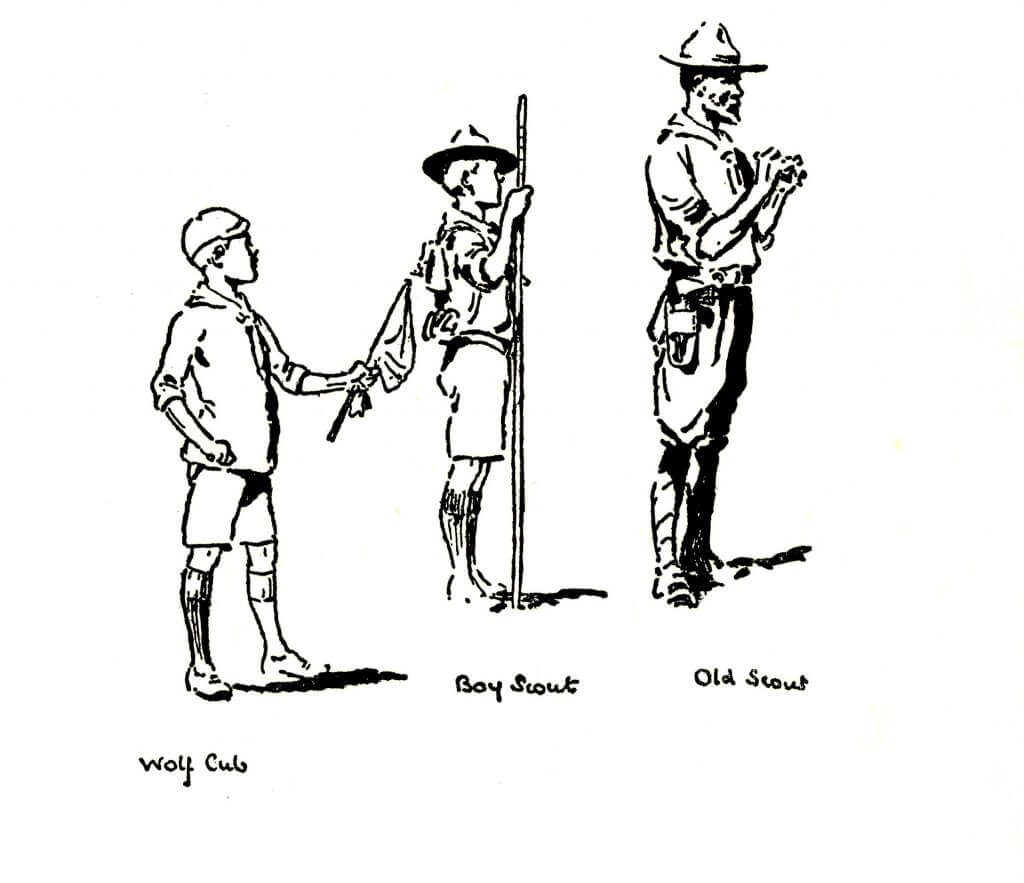
In October 1916 Baden-Powell announced that a motion had been passed ratifying Cubs membership of the Scouting Movement. This brought some new developments for the Wolf Cubs programme including changes to the skills and knowledge a Wolf Cub must have to attain their first and second stars.
The requirement to turn a somersault clearly caused some consternation as Cubmasters sought a definition of what constituted a somersault.
Vera hasten to reassure them that their Cubs were not being encouraged to perform Olympic standard tumbles consisting of '…jumping in the air from a standing position, turning over in the air and coming down to a standing position again…. ….the ordinary head-over-heels performance of small boys is the recognised and official test!'
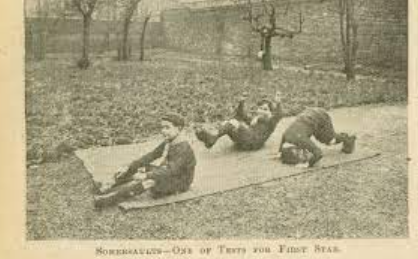
Amid much anticipation The Wolf Cubs Handbook was launched on 29 November 1916, just in time for Christmas! Vera described the contents: '…the dullest and sleepiest little Cub could not help but be inflamed by it; and is simply full of fascinating games and those “brainwaves” that only the Chief seems to get.'
Although Vera gives Baden-Powell the credit for these “brainwaves” it seems likely that she heavily influenced the content of the Handbook, drawing on her practical experience of working with Cubs.
On the 16th December 1916 the newly revamped Wolf Cubs were given a formal launch at Caxton Hall in London. In her new role it is likely that Vera was heavily involved in its planning.

In January 1917 Vera gives a report on the success for the event which had included a speech by Baden-Powell, a Grand Howl led by the 11th East Ham Pack; the investiture of a new Cub into the 11th East Ham Pack, and displays given by local packs. The displays included that of the “controversial” somersault and knitting, an activity which contributed to a Cub attaining his War Service Badge.
'Cubbing'
Following the launch of the Wolf Cubs Vera’s main role appears to have been to give advice to Cub Leaders. She also discussed how to persuade parents of the value of Wolf Cubs and talks about leaders holding meeting for parents to attend so they can ask questions and observe activities, a method that is still in use today.
Vera travelled the country visiting Packs and events such as the Manchester Ladies’ Conference, a meeting of Lady Cub and Scoutmasters and Lady workers. She wrote her monthly column summarising the places she had visited and contributed to the new “The Wolf Cub” magazine creating content aimed at the Cubs themselves.
Plans for a Jamboree
Following the end of the War in November 1918 plans started to be put in place for the first international Jamboree. In January 1920, following over a year of planning, Vera was able to confirm that the Cubs would be involved in a variety of roles which would include the opening ceremony at which 500 Cubs would perform a “Grand Howl”. They would also put on a variety of other “Cubby stunts” including demonstrations and displays. A huge logistical task lay ahead of her, but by March 1920 all the participants were in place and no doubt practising hard for the big event. In May 1920 she was able to report: 'They are up to a really splendid standard, both of smartness, efficiency, discipline and Cubbiness.'
Due to the international nature of the event (34 countries would participate) Vera was very aware that this was an opportunity to showcase the Wolf Cubs to the world.
By this point Vera’s job title had done away with the “assistant” and she was Cub Secretary, presumably acknowledging the enormity of the work she had delivered and the level of responsibility that her role involved. She was also beginning to develop additional resources for Cub Leaders and in June 1920 one of her first books “The Book of Cub Games” was published. This was quickly followed by “Character Training in the Wolf Cub Pack” and “Stories of the Saints by Candlelight”.
The International Jamboree was a tremendous success for the Movement, and for Vera, in recognition of her efforts she was presented with Scouting’s highest level of award, the Silver Wolf.
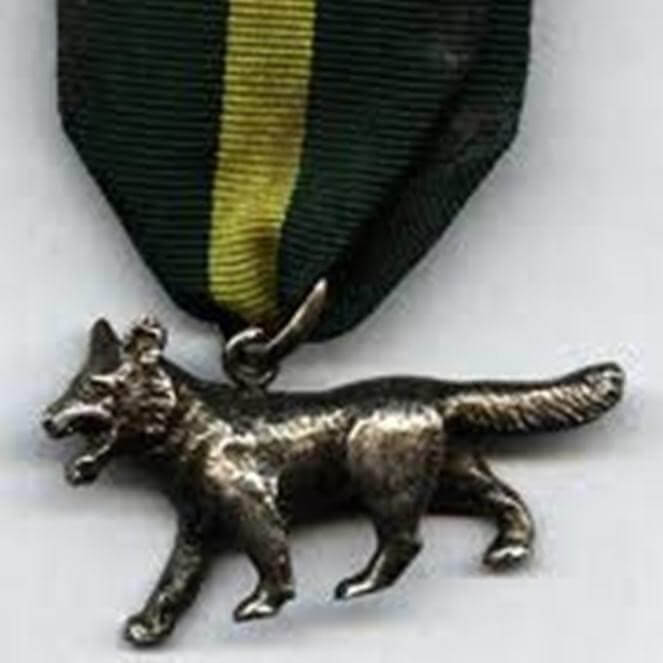
'I must say goodbye and go on'
Over this hugely busy period Vera was making some decisions about her future. In the September 1920 “Cubmaster’s Page” she took the opportunity to reflect on the last four years since she took up her post at Headquarters. She wrote “A history of Cubbing” marking the key moments in the section’s development. She went on to write “the most difficult bit of the Cubmaster’s Page I have ever had to write” and explained that she would be leaving the Association to become a Sister of Charity of St Vincent de Paul.
When Vera took up her role at Headquarters on 6th September 1916 she was in the minority, a person with two years of Cub experience who had challenged the watered down version of Scouting that had been presented as the Cub programme in January 1914. By the time she relinquished her role she was leaving a Movement “full of Cub experts who can write, speak and organise.” She was also delighted to leave her role in the hands of Miss A.C. Hewat, Cub Commissioner for Poplar, who had been involved in running the Cubs Camp at the Jamboree. The Cubmaster’s Page was taken over by N.D. Power, the Chief Commissioner for Wolf Cubs.
Vera did not stay with the religious life for very long. She continued to be active in Scouting attending an early Akela training course at Gilwell Park. She also wrote books on Scouting and Cubbing techniques as well as a raft of children’s fiction.
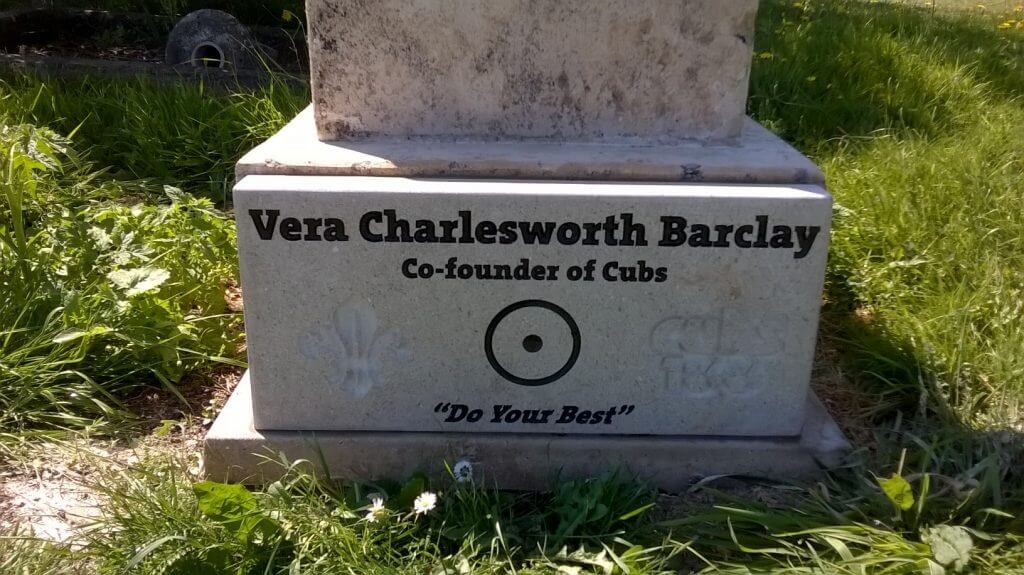
Vera moved several times living at various points in Edgbaston in Birmingham, where she ran a Cub Pack, in France where she was involved in Cubs training courses. Vera returned to Britain at the outbreak of the Second World War and later lived on the Isle of Wight and in London.
Her last known writing for The Scout Association was in November 1956 issue of ‘The Scouter’ as part of the build up to the celebrations which in 1957 would mark the centenary of Baden-Powell’s birth and 50 years since the first Scouting ideas were tested on Brownsea Island.
Vera Charlesworth Barclay spent her last years in Sheringham on the North Norfolk coast with her niece Betty. She died in 1989 and is buried in Sheringham Cemetery. In 2016 a project involving Norfolk Scouts, The Scouts Heritage Service and Vera’s family saw the restoration of her grave and the addition of a plaque acknowledging her great contribution to Scouting.